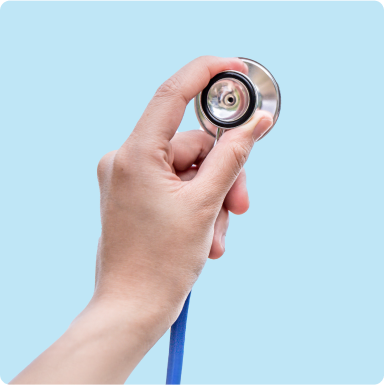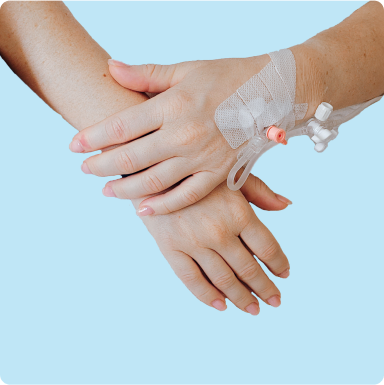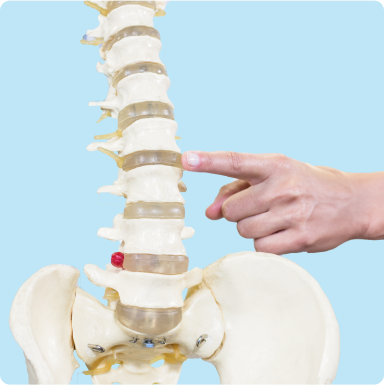Overactive Bladder Syndrome
Overactive Bladder Syndrome (OAB) is characterized by the presence of urinary urgency in the absence of urinary infection or other demonstrable pathologies. Urinary urgency is defined as the sudden desire to urinate that is difficult to delay. This urgency is typically accompanied by increased urinary frequency and/or nocturia, which is the need to get up at night to urinate. It may or may not be accompanied by urge urinary incontinence (UUI), which refers to involuntary urine leaks.
It is a problem that clearly impacts the quality of life of patients, significantly affecting their social, work, and sexual activity.
In Spain, the EPICC cooperative study of the Spanish Association of Urology placed the prevalence of OAB at 6% in women aged 25 to 64 and 4.6% in men aged 50 to 64. In the same study, in institutionalized individuals over 65, the figures were significantly higher, with a prevalence of almost 40% in women and 35% in men.
The origin of OAB is multifactorial. The causes can be neurogenic, urothelial, myogenic, or idiopathic, meaning unknown.
Normally, when the bladder is full, the brain sends signals for the detrusor muscle, located in the bladder, to contract. Upon contraction, urine passes through the urethra and is expelled.
In patients with overactive bladder syndrome, the detrusor muscle contracts involuntarily before the bladder is full, causing them to feel that sudden, uncontrolled, and urgent need to urinate.
The risk of OAB increases with age and often appears associated with other lower urinary tract symptoms (LUTS). Moreover, various chronic conditions (depression, constipation, neurological disorders, diabetes, and erectile dysfunction, among others) have been linked to OAB.
For the diagnosis of overactive bladder syndrome, symptoms and signs must be documented, and other pathologies that could cause the same symptoms in patients should be excluded.
Thus, the diagnosis is primarily based on the following points:
- Medical and pharmacological history
- Complete physical examination
- Urinalysis
- Voiding diary and symptom questionnaires (OABq)
- Other diagnostic tests (ultrasound, urodynamics, etc).
However, it is an underdiagnosed condition since many patients do not seek medical attention for various reasons, such as believing it is an age-related issue, thinking there is no solution, or due to the embarrassment associated with urinary incontinence.
Below are recommendations for maintaining a healthy lifestyle and thus reducing the risk of developing overactive bladder syndrome:
- Maintain a healthy weight by following a balanced diet
- Reduce caffeine consumption
- Engage in regular physical activity
- Monitor fluid intake
- Quit smoking
- Strengthen pelvic floor muscles through Kegel exercises

Other pathologies
Abrams P, et al. The Standardisation of terminology of lower urinary tract function: report from the standardisation sub-committee of the International continence Society. Neurol and Urodyn. 2002; 21:167-78
Carretero Colomer. Vejiga Hiperactiva. Offarm. 2004; 23(4):149-152
Urology Care Foundation. Vejiga hiperactiva [online]. Available at: https://www.urologyhealth.org/urology-a-z/vejiga-hiperactiva [Last access: september 2023]
Adot JM, et al. Guía vejiga hiperactiva de la AEU. Asociación Española de Urología, 2014
Martínez Agullo E, Ruiz Cerdá JL, Gómez Pérez L, Ramírez Backhaus M, Delgado Oliva F,
Rebollo P, et al. Prevalence of urinary incontinence and hyperactive bladder in the Spanish population: results of the EPICC study. Actas Urol Esp. 2009;33:159-66.
Abrams P et al. Overactive Bladder Significantly Affects Quality of Life. Am J Manage Care. 2000;6(11 Suppl):S580-90
Verdejo-Bravo et al. Consensus document on overactive bladder in older patients. Rev Esp Geriatr Gerontol. 2015;50(5):247-56
European Association of Urology. EAU Guidelines on Management of Non-Neurogenic Female Lower Urinary Tract Symptoms (LUTS). 2023 [Internet]. Available at: https://uroweb.org/guidelines/non-neurogenic-female-luts [Last accessed: September 2023]




